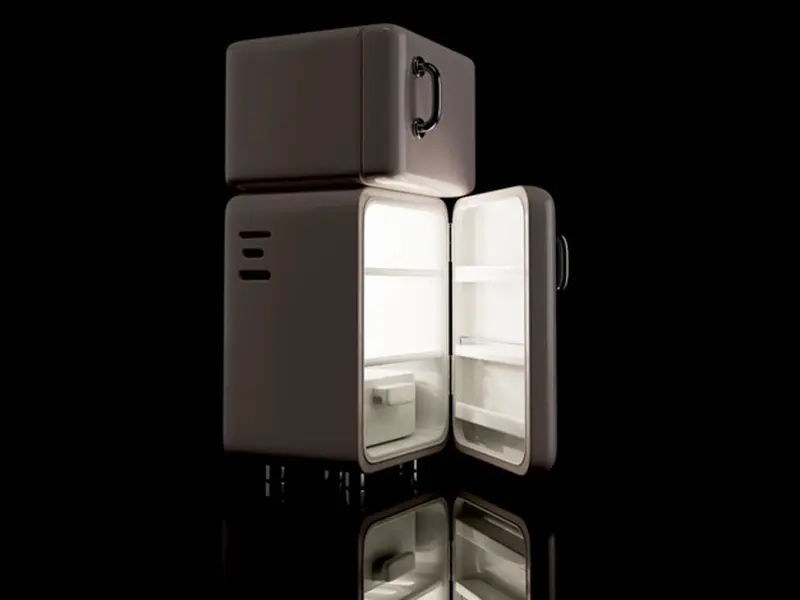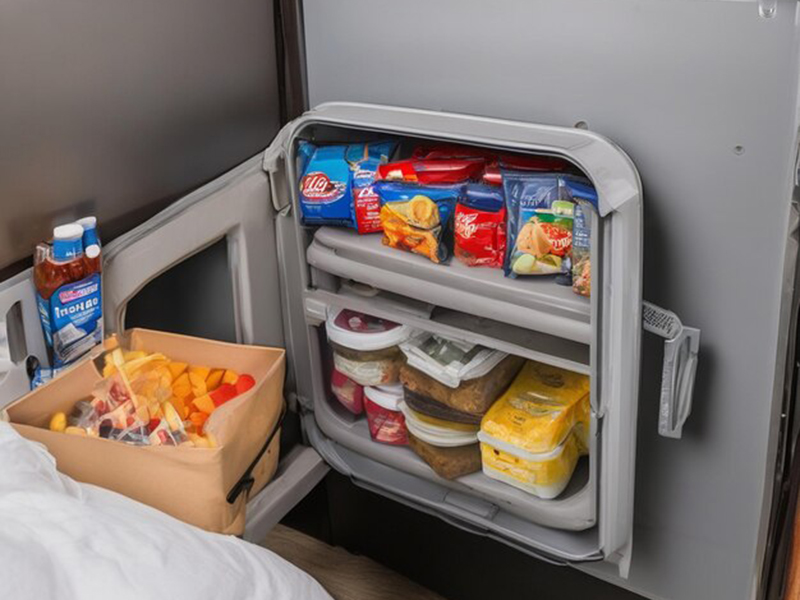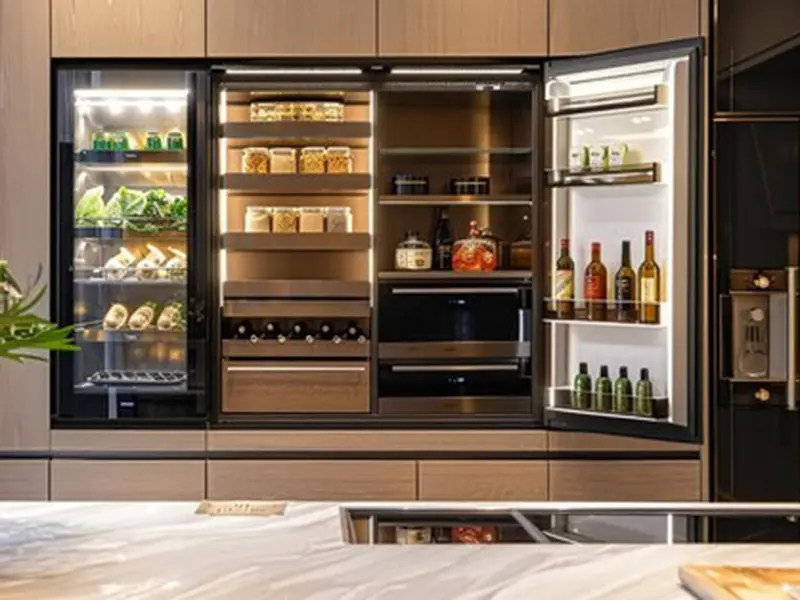What Are the Key Design Features of a High-Performance Wire Tube Condenser?

High-performance wire tube condensers stand out for their compact design and exceptional heat transfer efficiency. Their space-saving structure ensures seamless integration into tight installations, while superior cooling performance reduces operational costs. Compared to traditional models, they deliver a 50% higher heat transfer coefficient and consume less energy, as shown below:
| Feature | Wire Tube Condenser | Traditional Condenser |
|---|---|---|
| Heat Transfer Coefficient | 50% higher than plate condensers | Standard levels |
| Energy Consumption | Reduced due to higher efficiency | Higher due to lower efficiency |
Ningbo Senjun New Materials Co., Ltd. specializes in developing these advanced condensers, ensuring reliable solutions for applications like refrigerators, freezers, and medical equipment.
Key Takeaways
- High-performance wire tube condensers transfer heat 50% better than older models, saving energy.
- Strong materials like copper and aluminum help heat move faster and resist rust, lasting longer.
- Smart designs, like curvy tube shapes, remove heat well and cool better overall.
Material Composition and Durability
Importance of Copper and Aluminum in Performance
When I evaluate the performance of a wire tube condenser, the choice of materials plays a critical role. Copper and aluminum are the most commonly used materials, each offering unique advantages. Copper stands out for its exceptional thermal conductivity, which ensures rapid heat transfer. This property is essential for maintaining the efficiency of the condenser. Aluminum, on the other hand, is lightweight and highly resistant to corrosion. These characteristics make it ideal for applications where durability and ease of installation are priorities.
In many designs, manufacturers combine copper and aluminum to maximize performance. For instance, copper alloys enhance both thermal conductivity and corrosion resistance, while aluminum fins improve heat dissipation. This combination creates a balance between efficiency and longevity. At senjun, we prioritize these materials in our wire tube condensers to deliver reliable and high-performing solutions for various industries, including refrigeration and medical equipment.
Corrosion Resistance and Structural Reinforcements
Corrosion resistance is another critical factor I consider when assessing the durability of a wire tube condenser. Advanced materials like stainless steel and copper alloys provide excellent protection against harsh environments. Additionally, modern manufacturing techniques incorporate eco-friendly corrosion-resistant coatings. These coatings not only extend the lifespan of the condenser but also reduce maintenance needs, making them a cost-effective solution.
Structural reinforcements, such as steel wires, further enhance the durability of the condenser. Lightweight alloys are also gaining popularity for their ability to reduce the overall weight of cooling systems. At senjun, we integrate these advancements into our designs to ensure our products perform reliably in demanding conditions. Whether it’s a refrigerator or a medical ultra-low temperature freezer, our condensers are built to last.
Geometrical Design of Wire Tube Condensers

Tube Length, Diameter, and Arrangement for Efficiency
When designing a wire tube condenser, I focus on optimizing tube dimensions and arrangements to maximize efficiency. The length, diameter, and wall thickness of the tubes directly influence heat transfer performance. For instance, a tube with a 1-inch outer diameter, 0.049-inch wall thickness, and an effective length of 42.2 feet achieves excellent thermal efficiency. These specifications strike a balance between durability and heat dissipation, ensuring reliable performance in demanding applications.
The arrangement of tubes also plays a critical role. I prefer configurations like coil or serpentine patterns because they increase the surface area available for heat exchange. This design improves airflow around the tubes, enhancing overall heat transfer efficiency. At senjun, we incorporate these advanced geometrical designs into our wire tube condensers to deliver superior cooling performance across various industries, including refrigeration and medical equipment.
| Tube Diameter | Wall Thickness | Effective Length |
|---|---|---|
| 1 inch (OD) | 0.049 inches | 42.2 feet |
Wire Spacing and Multi-Layer Configurations
Wire spacing and multi-layer configurations significantly impact the performance of a wire tube condenser. I find that precise wire spacing ensures uniform heat dissipation, preventing hotspots and improving overall efficiency. Multi-layer designs, on the other hand, offer several advantages. They enhance heat transfer by increasing the surface area, making them ideal for applications requiring rapid cooling or high-temperature differentials.
These configurations also save space, making them suitable for compact installations like refrigerators and freezers. Additionally, multi-layer designs are less prone to corrosion and easier to maintain compared to traditional models. At senjun, we leverage these innovations to create condensers that are not only efficient but also versatile. Whether it’s for HVAC systems or food storage, our products meet the highest standards of performance and reliability.
Tip: Multi-layer configurations reduce operational costs by improving energy efficiency and simplifying maintenance.
Surface Area and Energy Efficiency

Maximizing Heat Dissipation Through Surface Area
When designing a wire tube condenser, I prioritize maximizing the surface area to enhance heat dissipation. This process involves several precise steps to ensure optimal performance:
- Material Selection: I choose durable materials like carbon steel for their excellent heat transfer properties.
- Cutting and Straightening: Tubes are cut to exact lengths, ensuring uniformity across the condenser.
- Bending and Forming: Tubes are bent into efficient shapes, such as serpentine coils, to increase the surface area available for heat exchange.
- Assembly and Welding: Wires are welded to the tubes, creating a robust and efficient condenser unit.
- Quality Inspection: Every unit undergoes thorough testing to meet performance standards.
These steps ensure that the condenser achieves maximum heat dissipation, which is critical for applications like refrigeration and air conditioning. At senjun, we implement these techniques to produce high-performance wire tube condensers that excel in both efficiency and reliability.
Reducing Energy Consumption with Optimized Design
Optimized designs play a pivotal role in reducing energy consumption. By maximizing the surface area, wire tube condensers achieve faster cooling and a heat transfer coefficient up to 50% higher than traditional plate condensers. This improvement directly translates to lower energy usage and reduced electricity bills for users.
Optimized geometries, such as serpentine coil designs, enhance heat dissipation while minimizing energy consumption. These innovations make wire tube condensers a preferred choice for energy-conscious applications.
At senjun, we also explore advanced technologies like variable-speed compressors and IoT integration. Variable-speed compressors adjust their operation based on cooling demand, ensuring no energy is wasted. IoT-enabled systems allow real-time monitoring and control, further enhancing efficiency and reliability. These advancements reflect our commitment to delivering cutting-edge solutions for industries ranging from medical refrigeration to dehumidifiers.
By combining innovative designs with advanced technologies, senjun ensures that our wire tube condensers not only perform efficiently but also contribute to significant energy savings.
Applications and Expertise by senjun
senjun’s Role in Wire Tube Condenser Innovation
At senjun, I focus on pushing the boundaries of wire tube condenser technology. By leveraging advanced materials and cutting-edge techniques, I ensure our products deliver unmatched performance and reliability. For instance, I utilize copper alloys to enhance corrosion resistance and thermal conductivity, while aluminum fins improve heat dissipation through optimized designs. These innovations allow our condensers to excel in demanding environments.
| Innovation | Description |
|---|---|
| Copper Alloys | Improved corrosion resistance and thermal conductivity. |
| Aluminum Fins | Enhanced heat dissipation with optimized design. |
| Laser Welding | Precise joints that reduce leaks and boost efficiency. |
| Computer-Aided Design | Ensures optimal geometries for better heat transfer. |
I also integrate advanced manufacturing techniques like laser welding to create precise joints, reducing the risk of leaks and improving overall efficiency. With computer-aided design, I optimize geometries to maximize heat transfer. These efforts reflect senjun’s commitment to delivering high-performance solutions for industries ranging from refrigeration to medical equipment.
Applications in Refrigeration, Air Conditioning, and More
Wire tube condensers play a vital role in various applications. In refrigeration systems, they ensure consistent cooling for food preservation and medical storage. I’ve seen their effectiveness in HVAC systems, where they enhance air conditioning efficiency and maintain optimal indoor temperatures. Their compact design makes them ideal for tight installations, such as automotive air conditioning systems, where reliable cooling performance is essential.
- Refrigeration and HVAC systems: Maintain consistent temperatures and improve energy efficiency.
- Automotive sector: Provide reliable cooling for passenger and commercial vehicles.
- Industrial applications: Support cooling in manufacturing and chemical processing facilities.
- Food and beverage sector: Preserve perishable goods and ensure food safety.
- Renewable energy: Facilitate heat transfer in solar thermal systems.
At senjun, I tailor our wire tube condensers to meet the specific needs of these industries. Whether it’s a medical ultra-low temperature freezer or a dehumidifier, our products deliver exceptional performance and durability. This versatility underscores senjun’s expertise in creating innovative solutions for diverse applications.
Note: Ningbo Senjun New Materials Co., Ltd. specializes in the research, development, and production of wire tube condensers and copper aluminum fin heat exchangers for refrigerators, freezers, display cabinets, and more.
High-performance wire tube condensers excel due to their durable materials, optimized geometrical designs, and energy-efficient features. These advancements ensure reliable cooling solutions across industries.
| Key Takeaway | Description |
|---|---|
| Energy Efficiency | New designs enhance cooling efficiency and reduce costs. |
| Sustainability | Eco-friendly practices minimize environmental impact. |
| Long-term Reliability | Improved materials increase durability and lower maintenance needs. |
| Customization | Modular designs allow tailored solutions for specific requirements. |
| Technological Integration | AI optimizes performance and predicts failures. |
At senjun, I focus on innovation to deliver reliable and efficient solutions.
- Advanced materials like copper and steel wires ensure long-lasting performance.
- Aluminum fins and laser welding improve heat dissipation and minimize leaks.
- Eco-friendly practices, such as using recycled metals, enhance sustainability.
Ningbo Senjun New Materials Co., Ltd. remains committed to advancing wire tube condenser technology for applications like refrigerators, freezers, and medical equipment.
FAQ
What makes wire tube condensers more efficient than traditional models?
Wire tube condensers excel due to their optimized geometrical designs and superior materials. At senjun, I ensure every unit maximizes heat transfer and minimizes energy consumption.
How does senjun ensure the durability of its wire tube condensers?
I use advanced materials like copper alloys and eco-friendly coatings to resist corrosion. Structural reinforcements, such as steel wires, further enhance the longevity of senjun’s products.
In which industries are senjun’s wire tube condensers commonly used?
Senjun’s condensers serve refrigeration, HVAC, and medical industries. I also design them for applications like dehumidifiers, ice makers, and display cabinets, ensuring reliable performance across sectors.
Note: Ningbo Senjun New Materials Co., Ltd. specializes in developing wire tube condensers and copper aluminum fin heat exchangers for refrigerators, freezers, and more.


















